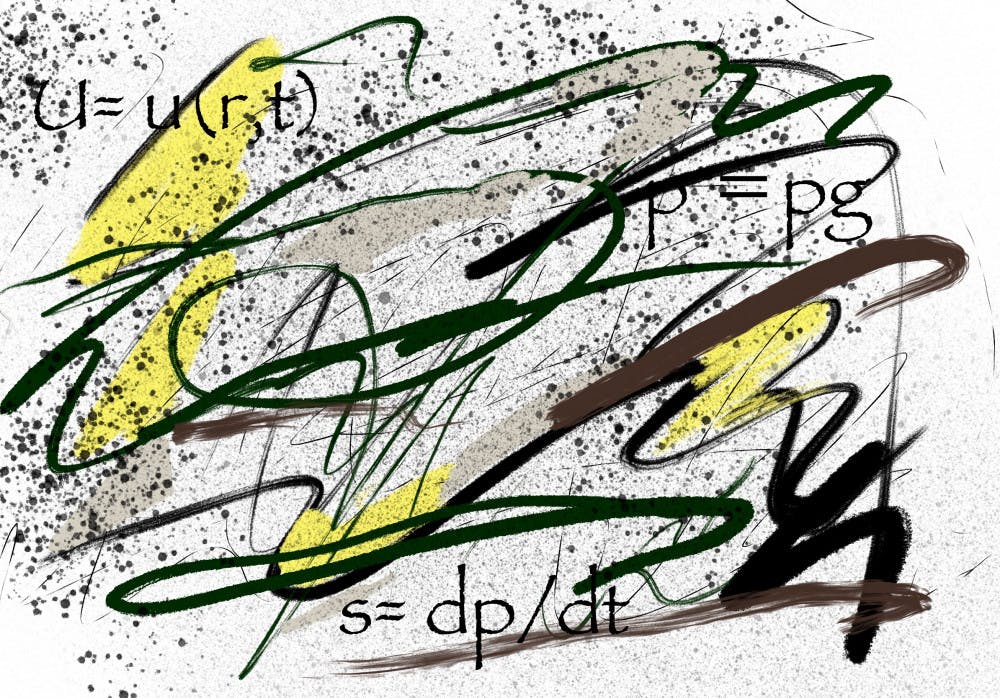While Jackson Pollock is most known for his unique painting style, some people admire his work for a vastly different reason. To engineers, Pollock’s work is fascinating because fluid mechanical analysis shows that his unique technique allowed him to overcome certain common difficulties involved in manipulating or painting with viscous fluids, such as paint and honey.
A research project conducted by Roberto Zenit, professor of engineering, and his team from his former university in Mexico found that through his painting technique, Pollock was able to avoid hydrodynamic instabilities in paint such as coiling or fragmenting. Pollock exhibited a style where he dipped a stick in paint and let it pour onto a canvas from a certain height while he moved the stick.
“In any (liquid) flow, if the environment changes even a little bit, those changes grow and take over the entire flow and it becomes something else. That is what an instability is,” said Neil Ribe, research director at Fluides, Automatique et Systèmes Thermiques, a research laboratory that is a part of the French National Center for Scientific Research. “Instabilities are caused by (disturbances) in the environment; a little gust of wind, a slight change in temperature,” he added.
The idea to investigate Pollock’s work first came to Zenit when an art historian asked him how it was possible to create textures like those seen in Pollock’s work. “As an engineer, you want to predict what happens to fluids, and as artists you want to use these fluids to produce something,” Zenit said.
The team observed Pollock’s technique through documentaries, analyzing his style and the resulting paintings of his process. “Important aspects to observe were the speed that the hand moved and the height at which the hand stood above the canvas,” Zenit said.
“To make such observations, we first take very high-resolution photographs of Pollock’s works. Then we do image processing … then do measurements on them based on the framework of fluid dynamics,” said Andrzej Herczynski, a research professor and laboratory director at Boston College who has published several papers on the fluid dynamical effects in Pollock’s paintings.
The team replicated Pollock’s technique by creating a machine with a stationary syringe at a fixed height that dripped fluid onto a moving canvas. “By doing this laboratory experiment under the same conditions, we can replicate his technique. In a sense, (we) dehumanize Jackson Pollock and understand in which set of conditions he was painting,” Zenit said.
When pouring a highly viscous fluid, such as honey, onto a surface, the fluid tends to accumulate and build on top of itself rather than dispersing outward like water, Zenit said. “By moving his hand, he was able to overcome this instability,” Zenit added.
Evidence of this accumulation, or coil, can be seen when Pollock slows his movement while physically turning himself or his hand. “This is especially evident in his painting (‘Number 1A, 1948’),” Herczynski said.
Pollock avoided droplets, or fragmentation, in his work in addition to the coiling. He deliberately created straight lines with thick paint, rather than droplets. “For example, the water jet coming out of a shower head fragments into droplets. … By using very viscous fluids, you can actually prevent that fragmentation from occurring. If you used paint that had little viscosity, the liquid paint would fragment and wouldn’t be able to deposit these straight lines,” Zenit said.
The rheology of a material — how a fluid responds or flows when you push it or apply a force on it — is also an important property of paint, Ribe said. “Paint has a specific rheology. You want it to stick to the brush when you pull it out … of the pot. As you move the brush over the surface, you want the paint to come off, and you want the paint to stay put where you painted it.” Fluids that respond to a certain level of force, like the force applied by a paintbrush, are called yield stress fluids.
While Zenit said that the research could have applications in identifying counterfeit Pollock paintings, Herczynski said the research should be understood as a contribution “to the art historical discussion about these works, how they were created, why they look the way they do and how to interpret what one sees. Our goal is to bring physics tools to a painting or a collection of paintings by an artist who … invited nature to play a role in his process.”
In the future, Zenit hopes to investigate the presence of instabilities in other forms of art, such as watercolor painting. “My hope is to engage with local artists, to have them in the lab … to make the idea of collaboration within fields a tangible idea,” he added.





